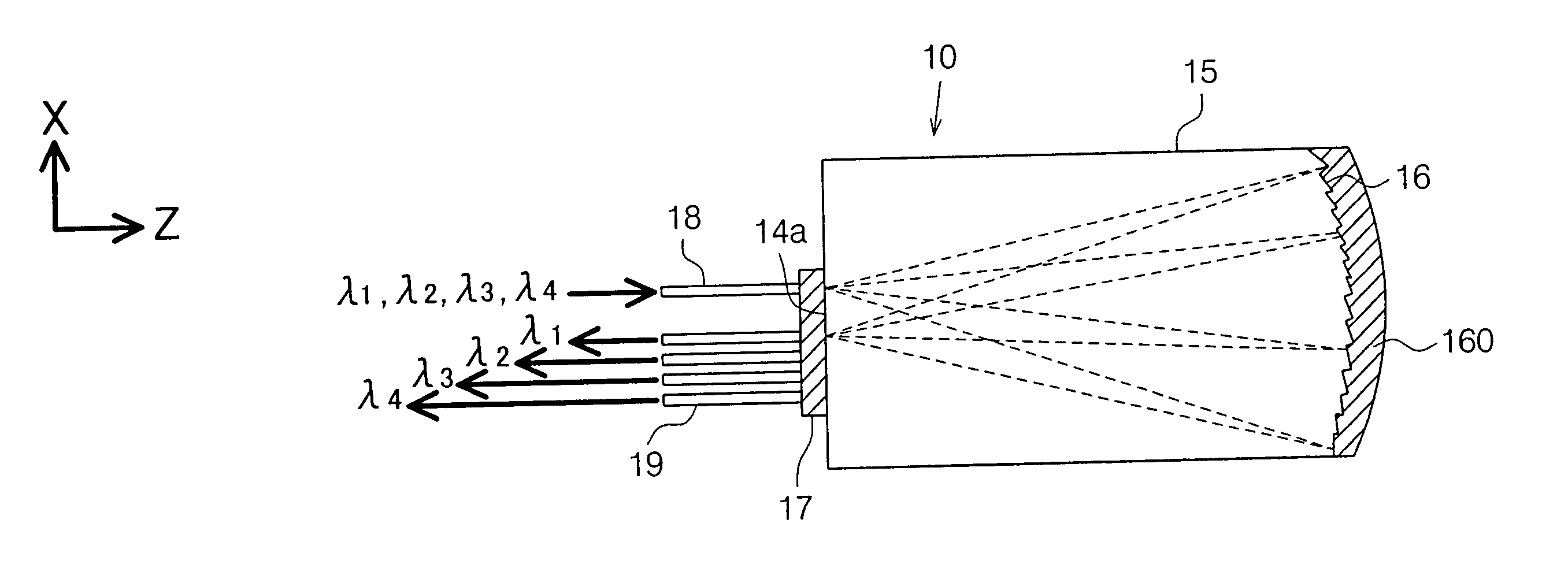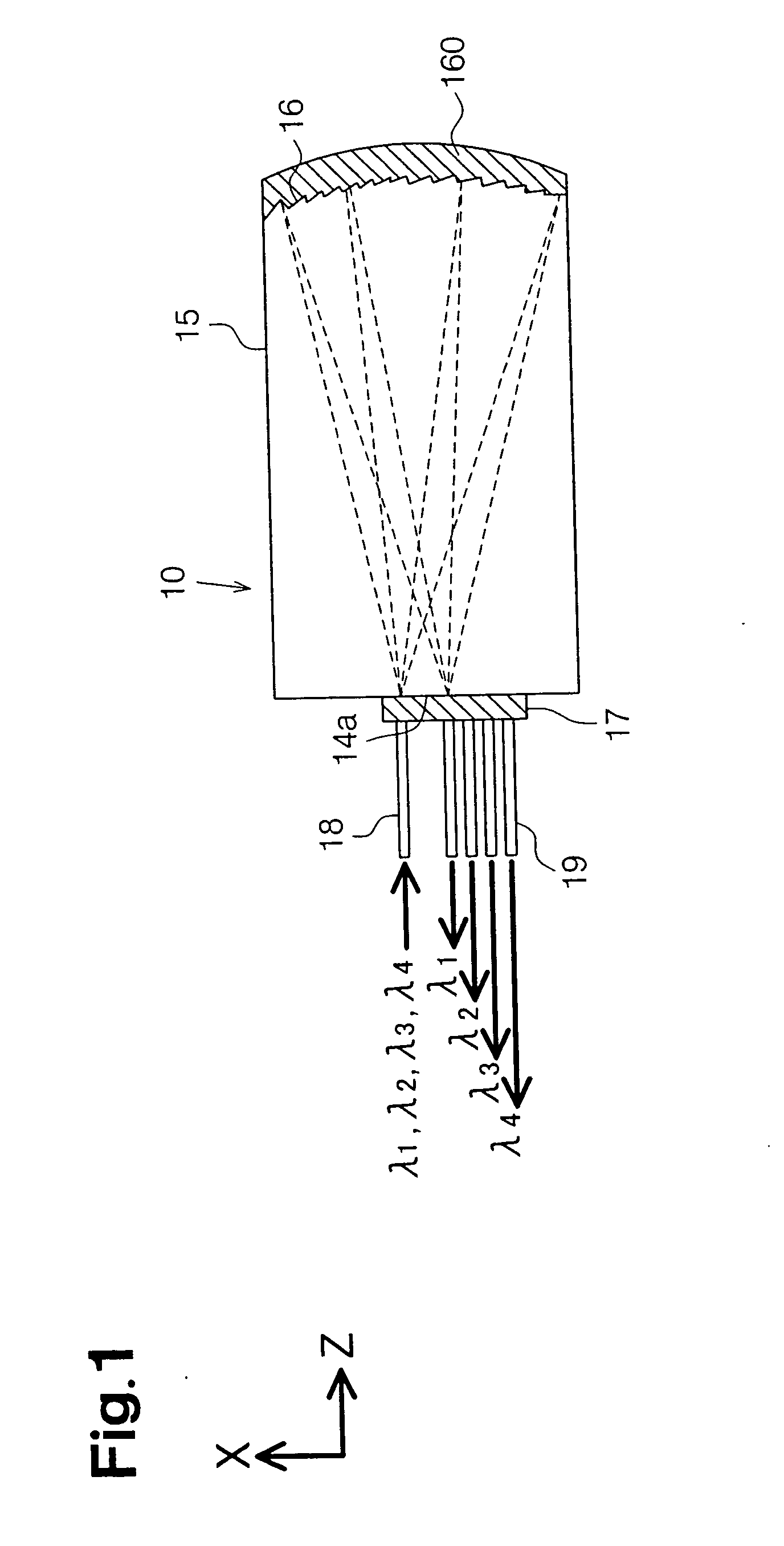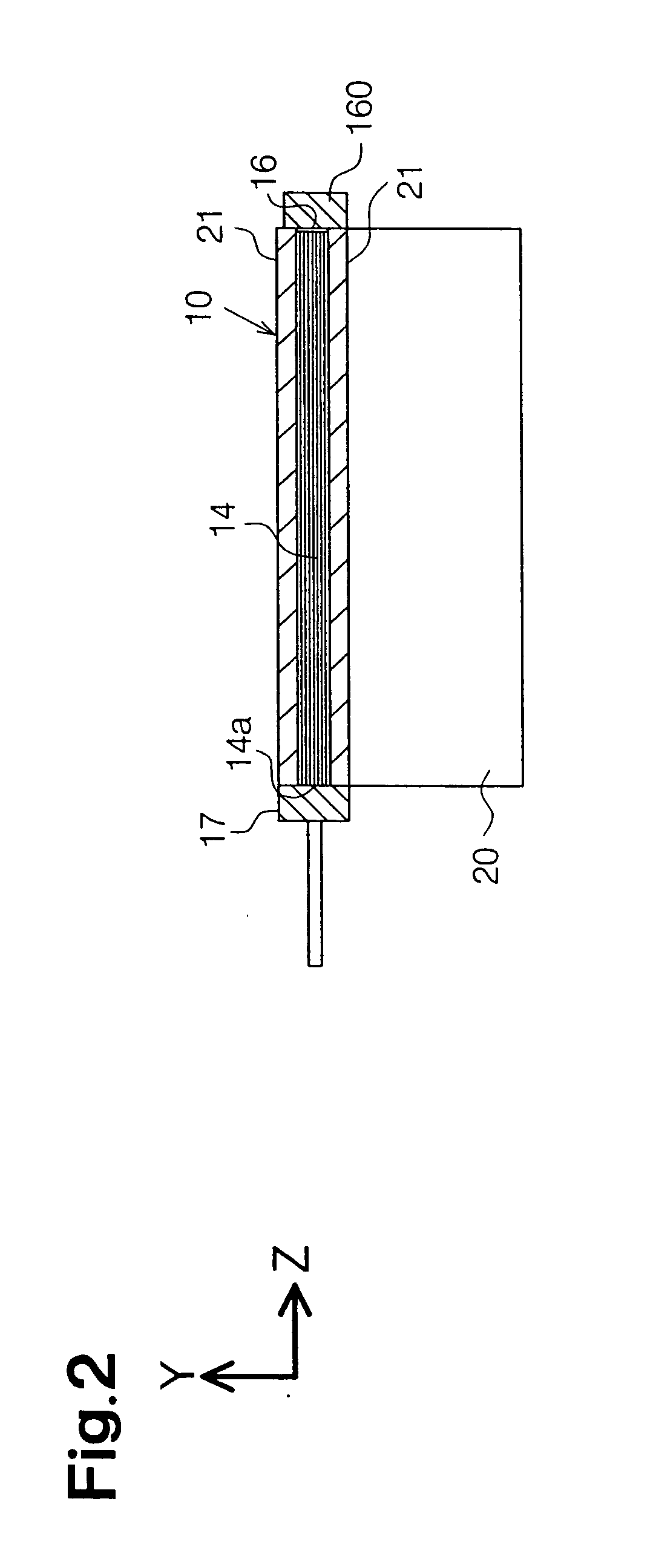Diffraction device using photonic crystal
- Summary
- Abstract
- Description
- Claims
- Application Information
AI Technical Summary
Benefits of technology
Problems solved by technology
Method used
Image
Examples
first embodiment
The first embodiment has the advantages described below.
The slab waveguide 15 serves as an input medium contacting the reflective blazed grating 16, which functions as a diffraction grating, and an output medium. The slab waveguide 15 is formed by a one-dimensional photonic crystal having a period characteristic in a single direction (Y axis direction) in which the wavelength of a wave propagated relative to the frequency of the incident wave changes greatly. Thus, an angular difference larger than the normal diffraction device is obtained in the same manner as in the above example (a). Further, the resolution (λ0 / Δλ) corresponding to the frequency of the separated frequencies is drastically decreased. Accordingly, the product of the order m required by the refraction light and the number of steps N may be small. This enables the reflective blazed grating 16 to have a reduced size and improved resolution.
The photonic crystal 14 satisfies the condition in which the absolute value ...
second embodiment
[Second Embodiment]
A diffraction device using a photonic crystal according to a second embodiment of the present invention will now be discussed with reference to FIGS. 3 and 4.
A diffraction device 10A using a photonic crystal shown in FIGS. 3 and 4 is embodied in a multiplexer / demultiplexer having the first feature of the present invention and has a structure corresponding to example (d). In the description of the second embodiment, components that are the same as the corresponding components of the first embodiment are denoted with the same reference numeral and the alphabet “A” following the numeral. Such components will not be described.
In the first embodiment, the light (the light in which optical signals λ1 to λ4 having a plurality of frequencies are multiplexed) transmitted by the input optical fiber 18 enters the slab waveguide 15 from the end of the input optical fiber 18 through the input surface 14a via the phase grating 17. The incident wave is propagated by the hig...
third embodiment
[Third Embodiment]
A diffraction device using a photonic crystal according to a third embodiment of the present invention will now be discussed with reference to FIG. 5 and FIG. 6.
A diffraction device 10 using the photonic crystal of FIGS. 5 and 6 is embodied in a multiplexer / demultiplexer having the first feature of the present invention and has a structure corresponding to example (d). In the description of the third embodiment, components that are the same as the corresponding components of the first embodiment are denoted with the same reference numeral and the alphabet “B” following the numeral. Such components will not be described.
The diffraction device 10B of the third embodiment differs from the second embodiment of FIG. 3 in that the diffraction grating surface of the reflective blazed grating 16B has the concave mirror shape of the first embodiment of FIG. 1 and in that the lens element for incident beam to an input surface of the slab waveguide 15A is only the cylind...
PUM
 Login to View More
Login to View More Abstract
Description
Claims
Application Information
 Login to View More
Login to View More - Generate Ideas
- Intellectual Property
- Life Sciences
- Materials
- Tech Scout
- Unparalleled Data Quality
- Higher Quality Content
- 60% Fewer Hallucinations
Browse by: Latest US Patents, China's latest patents, Technical Efficacy Thesaurus, Application Domain, Technology Topic, Popular Technical Reports.
© 2025 PatSnap. All rights reserved.Legal|Privacy policy|Modern Slavery Act Transparency Statement|Sitemap|About US| Contact US: help@patsnap.com



